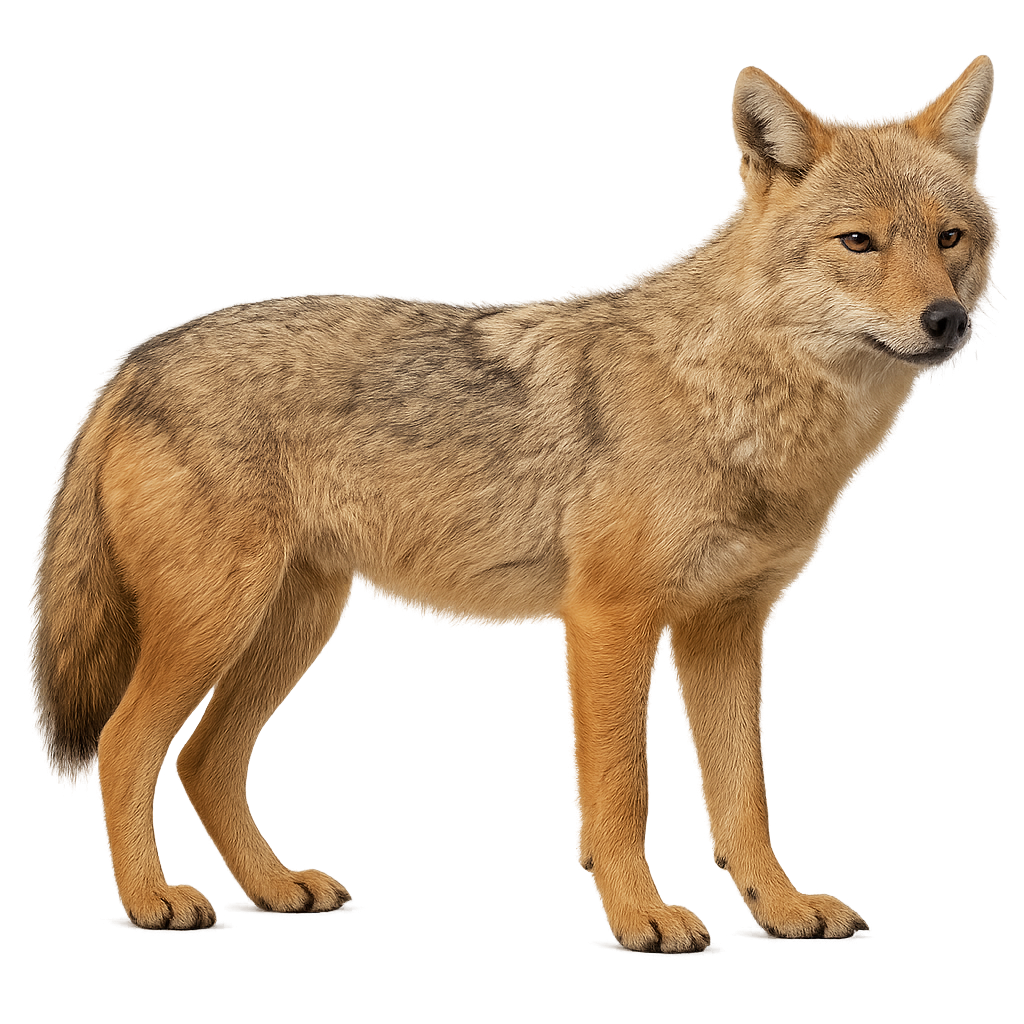Observe and photograph a species in its natural habitat
Learn where and when to observe a species in the wild, how to recognize it in the field, and what habitats it lives in. Get photography tips adapted to its behavior and capture stunning images without disturbing the animal. For full details, open the complete profile in the WildlifePhotographer app.
African Golden Wolf
Scientific name: Canis lupaster

IUCN Status: Least Concern
Family: CANIDAE
Group: Mammals
Shyness: Very shy
Safe distance: 30 m
Breeding season / Courtship: 15.10-15.01
Gestation: 60 à 63 jours
Births: 15.02-15.04
Habitat:
Semi-arid zones and open savannas
Description:
The Golden Wolf is a medium-sized canid native to the Middle East and certain regions of East Africa. It measures about 1.2 to 1.5 meters in length, including its tail, and weighs between 11 and 20 kg. Its coat is generally golden yellow or light brown, with black markings on its back and legs, and lighter shades on its belly. It has long, pointed ears and a narrow, elongated head. The Golden Wolf is primarily carnivorous, feeding on small mammals, birds, reptiles, and sometimes fruits. It lives in family groups or small packs and often hunts cooperatively with other members of the group. The Golden Wolf prefers open areas such as savannas, steppes, and mountains and is particularly adapted to semi-arid environments. Although the species is not immediately endangered, it is threatened by habitat loss, human conflict, and competition with larger carnivores such as jackals and lions.
Recommended lens:
>=400 mm
Photography tips:
Approach slowly and discreetly, using a telephoto lens, as the African wild dog is a wary animal that may quickly move away if it feels threatened.
Photograph early in the morning or late in the afternoon, when the light is soft and the African wild dog is more active, often foraging for food or moving with its pack.
Capture moments of natural behavior: The African wild dog is a social predator, often seen in groups, offering interesting opportunities for dynamic photos of hunting or social interactions.
Be patient and respectful: The African wild dog is a discreet animal and can be difficult to spot. Wait for moments when it is more visible and less cautious.
The African wild dog is an endangered species, mainly due to habitat loss, poaching, and the spread of diseases. It is crucial to respect its natural environment and minimize disturbances, especially during breeding periods. Follow local conservation rules to help preserve this vulnerable species.
Ready to take action?
Choose your platform and start your free trial today



